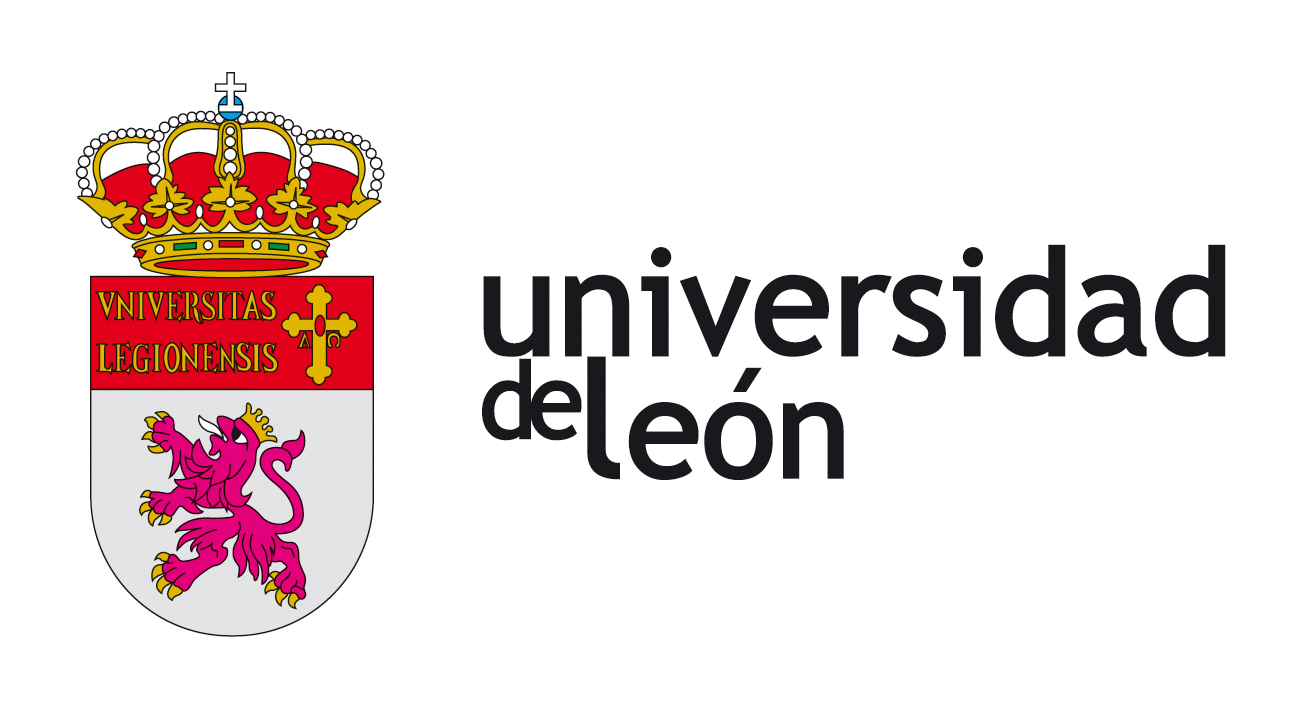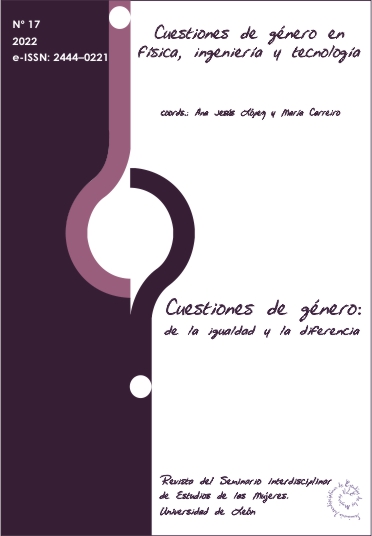Towards a descontruction of symbolic violence in a sample of advertising discourse. A critical discourse perspective
DOI:
https://doi.org/10.18002/cg.i17.7132Schlagworte:
woman, critical discourse analysis, multimodality, adverstising discourse, symbolic violence, gender studiesAbstract
This article examines the representation of women in the advertisements used by Dolce & Gabbana, in order to observe the examples of symbolic violence associated with women. The main objectives of this study are: 1) to deconstruct the main visual strategies used by Dolce & Gabbana to represent women in its newsletter; and 2) to characterize the main types of symbolic violence in the texts analysed. Data were collected from the newsletter used by Dolce & Gabbana to advertise their products through the internet from January to December 2016–19. The data are analysed based on the critical discourse analysis model of social actors proposed by van Leeuwen (2008) and Kress & van Leeuwen’s (2006) models of visual grammar.
Downloads
Métricas alternativas
Literaturhinweise
Ananda, Rizki; Fitriani, Siti Sarah; Samad, Iskandar Abdul & Patak, Andi Anto (2019): “Cigarette advertisements: A systemic functional grammar and multimodal analysis”. In: Indonesian Journal of Applied Linguistics, vol. 8, pp. 616-626. Available in: http://dx.doi.org/10.17509/ijal.v8i3.15261 [25/06/2021].
Aparicio Martín, Encarnación (2015): “Los medios de comunicación en la violencia contra las mujeres: El paradigma de la delgadez”. In: Historia y Comunicación Social, vol. 20, nº. 1, pp. 107-119. Available in: http://dx.doi.org/10.5209/rev_HICS.2015.v20.n1.49550 [30/06/2021].
Aubrey, Jennifer Stevens (2006): “Effects of sexually objectifying media on self-objectification and body surveillance in undergraduates: Results of a 2-year panel study”. In: Journal of Communication, vol. 56, nº. 2, pp. 366-386. Available in: https://doi.org/10.1111/j.1460-2466.2006.00024.x [25/06/2021].
Baykal, Nazli (2016): “Multimodal Construction of Female Looks: An Analysis of Mascara Advertisements”. In: Dilbilim Araştırmaları Dergisi, vol. 27, nº. 2, pp. 39-59. Available in: http://dad.boun.edu.tr/en/pub/issue/26814/282155 [30/06/2021].
Biglia, Bárbara & Conchi San Martín (coords.) (2007): Estado de Wonder Bra. Entretejiendo narraciones feministas sobre la violencia de género. Barcelona: Virus.
Blanco, Jessie (2009): “Rostros visibles de la violencia invisible. Violencia simbólica que sostiene el patriarcado”. In: Revista Venezolana de Estudios de la Mujer, vol. 14, nº. 32, pp. 63-70. Available in: http://ve.scielo.org/scielo.php?script=sci_arttext&pid=S1316-37012009000100007 [04/07/2021].
Bourdieu, Pierre (1998): La domination masculine. Paris: Éditions du Soleil.
Bourdieu, Pierre (2000): La dominación masculina. Barcelona: Anagrama.
Bowcher, Wendy L. (2012) (ed.): Multimodal Texts from Around the World: Cultural and Linguistic Insights. London: Palgrave.
Buonanno, Milly (2014): “Gender and media studies: progress and challenge in a vibrant research field”. In: Anàlisi. Quaderns de Comunicació i Cultura, vol. 50, pp. 5-25. Available in: http://dx.doi.org/10.7238/a.v0i50.2315 [04/07/2021].
Butler, Judith (1999): Gender Trouble. Feminism and the Subversion of Identity. London/ New York: Routledge.
Butler, Judith (2002): Cuerpos que importan. Sobre los límites materiales y discursivos del sexo. Trad. Alcira Bixio. México: Paidós.
Butler, Judith (2004): Undoing Gender. New York: Routledge.
Calogero, Rachel M. (2013): “Objects don’t object: Evidence that self-objectification disrupts women’s social activism”. In: Psychological Science, vol. 24, nº. 3, pp. 312-318. Available in: http://dx.doi.org/10.1177/095697612452574 [07/07/2021].
Cameron, Deborah (1998): “Performing Gender Identity: Young Men’s Talk and the Construction of Heterosexual Masculinity”. In: Jennifer Coates (ed.): Language and Gender: A Reader. Oxford: Blackwell, pp. 270-284.
Cameron, Deborah (2006): On Language and Sexual Politics. Oxon: Routledge.
Coates, Jennifer (1998) (ed.): Language and Gender: A Reader. Oxford: Blackwell.
Coates, Jennifer (2004): Women, Men and Language. A Sociolinguistic Account of Gender Differences in Language. Third edition. Harlow: Pearson.
Coates, Jennifer (2012): “Gender and Discourse Analysis”. In: James Paul Gee and Michael Handford (eds.): The Routledge Handbook of Discourse Analysis. London: Routledge, pp. 90-103.
Cruz García, Laura (2017): “Evidentials in advertising: a sample study”. In: Revista de Lingüística y Lenguas Aplicadas, vol. 12, pp. 1-12. Available in: https://doi.org/10.4995/rlyla.2017.7074 [07/07/2021].
Cuadrado, Mayka (2001): El género femenino a través de la publicidad. Madrid: Federación Mujeres Jóvenes.
Danilina, Elena A.; Kizyan, Ekaterina E. & Maksimova, Daria S. (2019): “Euphemisms in advertising discourse: Putting on a positive face and maintaining speech etiquette”. In: Training, Language and Culture, vol. 3, nº. 1, pp. 8-22. Available in: http://dx.doi.org/10.29366/2019tlc.3.1.1 [10/07/2021].
Del Rosso, Theresa (2017): “There’s a cream for that: A textual analysis of beauty and body-related advertisements aimed at middle-aged women”. In: Journal of Women & Aging, vol. 29, nº. 2, pp. 185-197. Available in: http://dx.doi.org10.1080/08952841.2015.1125698n [10/07/2021].
Eckert, Penelope & Sally McConnell-Ginet (2003): Language and Gender. Cambridge: Cambridge University Press.
Galarza, Emelina; Cobo, Rosa & Esquembre, Mar (2016): “Medios y violencia simbólica contra las mujeres”. In: Revista Latina De Comunicación Social, vol. 71, pp. 818-832. Available in: http://dx.doi.org/10.4185/RLCS-2016-1122 [04/07/2021].
Giaccardi, Soraya et al. (2016): “Media and Modern Manhood: Testing Associations Between Media Consumption and Young Men’s Acceptance of Traditional Gender Ideologies”. In: Sex Roles, vol. 75, pp. 151–163. Available in: http://dx.doi.org/10.1007/s11199-016-0588-z [11/07/2021].
Gil Calvo, Enrique (2000): Medias miradas: un análisis cultural de la imagen femenina. Madrid: Anagrama.
Goddard, Angela & Lindsey Meân Patterson (2000): Language and Gender. London/ New York: Routledge.
Gómez-Escalonilla, Gloria; Antonio García, Marina Santín; Raquel Rodríguez & Juan Francisco Torregrosa (2008): “La imagen de la mujer política en los medios de comunicación”. In: Feminismos, vol. 11, pp. 59-71. Available in: https://rua.ua.es/dspace/bitstream/10045/27216/1/Feminismos_11.pdf [12/07/2021].
Hackley, Chris & Hackley, Rungpaka Amy (2017): Advertising and Promotion. London: Sage.
Halliday, Michael. A. K. & Christian M. I. M. Matthiessen (2014): An Introduction to Functional Grammar. London: Arnold, 4th Ed.
Hashim, Azirah & Noriza Hassan (2011): “Genre Analysis”. In: Azirah Hashim, David Maya Khemlani and James McLellan (eds.): Text, Discourse and Society. Functional and Pragmatic Approaches to Language in Use. Frankfurt: Peter Lang, pp. 143- 163.
Jeffries, Lesley (2007): Textual Construction of the Female Body. A Critical Discourse Approach. Palgrave: Macmillan.
Jerslev, Anne (2017): “The elderly female face in beauty and fashion ads: Joan Didion for Céline”. In: European Journal of Cultural Studies, vol. 21, nº. 3, pp. 349-362. Available in: https://doi.org/10.1177/1367549417708436 [28/06/2021].
Kress, Gunther & Theo van Leeuwen (2006): Reading Images: The Grammar of Visual Design. 2nd Ed. London: Routledge Press.
Kroon Van Diest, Ashley & Perez, Marisol (2013): “Exploring the integration of thin-ideal internalizationand self-objectification in the prevention of eating disorders”. In: Body Image, vol. 10, pp. 16-25. Available in: https://asu.pure.elsevier.com/en/publications/exploring-the-integration-of-thin-ideal-internalization-and-self- [12/06/2021].
Leah Cross, Judith (2006): “Icons as ideology. A media construction”. In: Inger Lassen, Jeanne Strunck and Torben Vestergaard (eds.): Mediating Ideology in Text and Image. Ten Critical Studies. Amsterdam/Philadelphia: John Benjamins, pp. 173-192.
Magalhães, Célia Maria & Paulo Henrique Caetano (2012): “A Comparative Study of Brazilian and British Images of the Black Body”. In: Wendy L. Bowcher (ed.): Multimodal Texts from Around the World: Cultural and Linguistic Insights. London: Palgrave, pp. 299-324.
Martín Lucas, Belén (2010) (ed.): Violencias (in)visibles. Intervenciones feministas frente a la violencia patriarcal. Barcelona: Icaria.
Martínez Lirola, María (2009): “Exploring new forms of gender violence: women as objects in plastic surgery’s leaflets”. In: Revista Alicantina de Estudios Ingleses (RAEI), vol. 22, pp. 181-194. Available in: https://doi.org/10.14198/raei.2009.22.12 [12/06/2021].
Martínez Lirola, María (2010): “Explorando nuevas formas de violencia de género: la mujer como objeto en los folletos de clínicas de estética”. In: Global Media Journal Mexico, vol. 7, nº. 13, pp. 80-94. Available in: https://rua.ua.es/dspace/bitstream/10045/27604/1/Feminismos_19_07.pdf [20/06/2021].
Martínez Lirola, María (2012a): “Deconstruyendo el discurso hegemónico del cuerpo perfecto: explorando la feminidad a través del análisis visual de folletos de clínica de estética”. In: Feminismos, vol. 19, pp.113-126. Available in: https://xdoc.mx/documents/feminismos-19-rua-universidad-de-alicante-5c4384304d056 [23/06/2021].
Martínez Lirola, María (2012b): “Exploring the image of women to persuade in multimodal leaflets”. Theory and Practice in English Studies (THEPES), vol. 5, nº. 1, pp. 27-55. Available in: http://hdl.handle.net/11222.digilib/129567 [12/07/2021].
Martínez Lirola, María & Jan Chovanec (2012): “The dream of a perfect body come true: Multimodality in cosmetic surgery advertising”. In: Discourse and Society vol. 23, nº. 5, pp. 487–507. Available in: https://doi.org/10.1177/0957926512452970 [22/07/2021].
McKay, Tanjare (2013): “Female Self-Objectification: Causes, Consequences and Prevention”. In: McNair Scholars Research Journal, vol. 6, nº. 1, pp. 53- 70. Available in: https://commons.emich.edu/mcnair/vol6/iss1/7/ [12/06/2021].
Mora, Necla (2014): “Reproduction of patriarchal hegemony in media texts”. In: Electronic Journal of Social Sciences, vol. 13, nº. 48, pp. 131-147. Available in: https://dergipark.org.tr/tr/download/article-file/70527 [15/06/2021].
Muñiz, Elsa (2010): “Las prácticas corporales de la instrumentalidad a la complejidad”. In: Elsa Muñiz (coord.): Disciplinas y prácticas corporales. Una mirada a las sociedades contemporáneas. Barcelona: Anthropos Editorial and México: Universidad Autónoma Metropolitana Azcapotzalco, pp. 17-50.
Pham, T. Thao (2014): Moroccan Immigrant Women in Spain. Honor and Marriage. New York: Lexington Books.
Proyecto Areste (2003): Arrinconando estereotipos en los medios de comunicación y la publicidad. Madrid: Dirección General de la Mujer de la Comunidad de Madrid.
Richardson, John E. (2007): Analysing Newspapers. An Approach from Critical Discourse Analysis. Hampshire: Macmillan.
Sarkar, Sumita (2014): “Media and women image: a feminist discourse”. In: Journal of Media and Communication Studies, vol. 6, nº. 3, pp. 48-58. Available in: https://doi.org/10.5897/JMCS2014.0384 [22/06/2021].
Sato, Toyoko (2011): “Representation of desire and femininity. The advertisement in late-modern consumer culture of Japan”. In: Danijela Majstorovic and Inger Lassen (eds.): Living with Patriarchy. Amsterdam/Philadelphia: John Benjamins, pp. 145-167.
Shaikh, Marvi; Ali Bughio, Faraz & Ali Kadri, Shakfat (2016): “The representation of men and women in advertisements: A critical discourse analysis”. In: Annual Research Journal of Gender Studies, vol. 7, pp. 108-141. Available in: https://www.researchgate.net/publication/281237934_THE_REPRESENTATION_OF_MEN_AND_WOMEN_IN_ADVERTISEMENTS_A_CRITICAL_DISCOURSE_ANALYSIS [27/06/2021].
Sharda, Adhikari (2014): “Media and Gender Stereotyping: The need for Media Literacy”. In: International Research Journal of Social Sciences, vol. 3, nº. 8, pp. 43-49. Available in: http://www.isca.in/IJSS/Archive/v3/i8/8.ISCA-IRJSS-2014-109.pdf [29/06/2021].
Talbot, Mary (2010): Language and Gender. Cambridge: Polity Press, 2nd Ed.
Tylka, Tracy L. & Augustus-Horvath, Casey L. (2011): “Fighting Self-Objectification in Prevention and intervention contexts”. In: Rachel Calogero, Stacey Tantleff-Dunn, & Joel Kevin Thompson (eds.): Self-Objectification in women; Causes, Consequences, and Counteractions. Washington, DC: American Psychological Association, pp. 187-214.
Velandia-Morales, Andrea & Rincón, Juan Carlos (2014): “Estereotipos y roles de género utilizados en la publicidad transmitida a través de la televisión”. In: Universitas Psychologica, vol. 13, nº. 2, pp. 517-527. Available in: http://dx.doi.org/10.11144/Javeriana.UPSY13-2.ergu [02/06/2021].
Van Dijk, Teun A. (2009): “Critical Discourse Studies: A Sociocognitive Approach”. In: Ruth Wodak and Michael Meyer (eds.): Methods of Critical Discourse Analysis. Second edition. London: Sage, pp. 62- 86.
Van Leeuwen, Theo (2008): Discourse and Practice. New Tools for Critical Discourse Analysis. Oxford: Oxford University Press.
Walter, Natasha (2010): Muñecas vivientes. El regreso del sexismo. Madrid: Turner Publicaciones.
Wodak, Ruth (1997) (ed.): Gender and Discourse. London: Sage Publications.
Wodak, Ruth (2011): “Critical Discourse Analysis”. In: Ken Hyland and Brian Paltridge (eds.): The Continuum Companion to Discourse. London/New York: Continuum, pp. 38-53.
Xu, Huimin & Tan, Yunying (2020): “Can Beauty Advertisements Empower Women? A Critical Discourse Analysis of the SK-II’s “Change Destiny” Campaign”. In: Theory and Practice in Language Studies, vol. 10, nº. 2, pp. 176-188. Available in: http://dx.doi.org/10.17507/tpls.1002.05 [20/09/2021].
Downloads
Veröffentlicht
Zitationsvorschlag
Ausgabe
Rubrik
Lizenz
Copyright (c) 2022 María Martínez Lirola

Dieses Werk steht unter der Lizenz Creative Commons Namensnennung - Nicht-kommerziell - Weitergabe unter gleichen Bedingungen 4.0 International.
L@s autores/as que publican en esta revista están de acuerdo con los siguientes términos:
1. L@s autores/as ceden de forma no exclusiva los derechos de explotación (reproducción, distribución, comunicación pública, transformación) a la Universidad de León, por lo que pueden establecer, por separado, acuerdos adicionales para la distribución no exclusiva de la versión de la obra publicada en la revista (por ejemplo, alojarlo en un repositorio institucional o publicarlo en un libro), con un reconocimiento de su publicación inicial en esta revista.
2. Este trabajo se encuentra bajo la Creative Commons Attribution-NonCommercial-ShareAlike 4.0 International License. Puede consultarse desde aquí la versión informativa y el texto legal de la licencia.
3. Se permite y se anima a l@s autores/as a difundir electrónicamente las versiones pre-print (versión antes de ser evaluada) y/o post-print (versión evaluada y aceptada para su publicación) de sus obras antes de su publicación, ya que favorece su circulación y difusión más temprana y con ello un posible aumento en su citación y alcance entre la comunidad académica.
Cuestiones de Género utiliza exclusivamente la licencia Atribución-NoComercial-CompartirIgual 4.0 Internacional (CC BY- NC-SA 4.0).
Bajo los siguientes términos:
- Atribución: Usted debe dar crédito de manera adecuada , brindar un enlace a la licencia, e indicar si se han realizado cambios . Puede hacerlo en cualquier forma razonable, pero no de forma tal que sugiera que usted o su uso tienen el apoyo de la licenciante.
- No Comercial: Usted no puede hacer uso del material con propósitos comerciales .
- Compartir Igual: Si remezcla, transforma o crea a partir del material, debe distribuir su contribución bajo la la misma licencia del original. cualquier uso permitido por la licencia.
No hay restricciones adicionales — No puede aplicar términos legales ni medidas tecnológicas que restrinjan legalmente a otras a hacer
L@s autores/as pueden consultar los derechos de copyright y las condiciones de autoarchivo en el directorio Dulcinea.










